木星 ALPO-Japan Latest

Jupiter Image 2022/06/13(UT)
Clyde Foster,Antonio Cidadao,Vincenzo della Vecchia,Paulo Casquinha,Niall MacNeill,Michel Jacques Jacquesson
C.Foster,A.Cidadao,V.della Vecchia,P.Casquinha,N.MacNeill,Michel.J
My Jupiter session started with the GRS near the CM,but with rather poor conditions.
But as I was finishing the session with the UV runs,
I sensed an improvement,and quickly ran some additional RGB and IR,which indeed came out better.
The NEBs/NEB(S) is highly disturbed across this region. I note the bright outbreak in the NEBs.
It is not bright in CH4 but shows well in the UV. There are a few outbreaks in the GRS wake,
which are bright in both CH4 and UV.
The GRS has extensions off its preceding and following edges.
The images appear to show that the chimney could be open towards the east of the hollow.
There is quite a prominent whitish oval(?) in the STB(S) sf the GRS,which is very prominent in the UV.



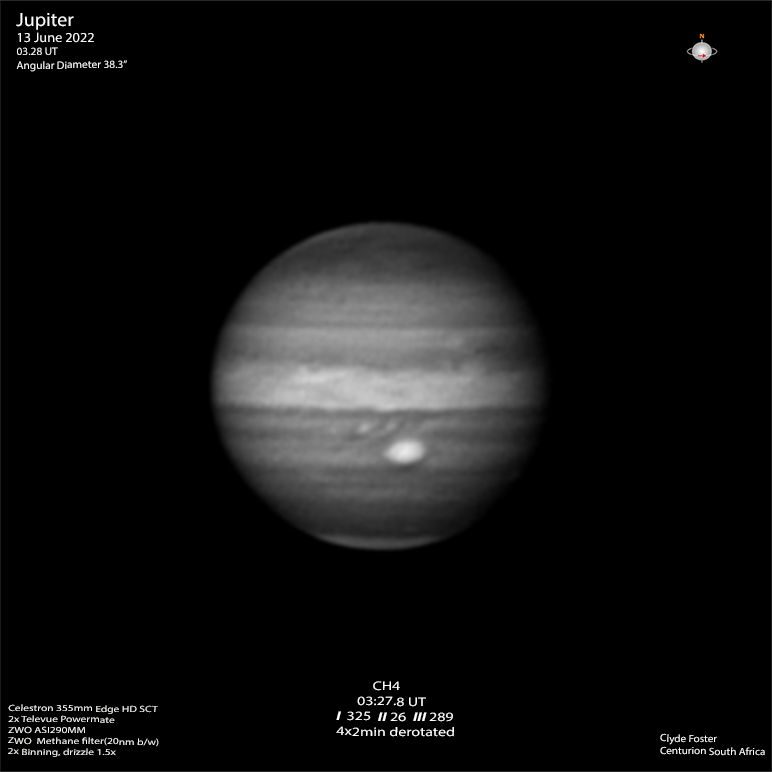
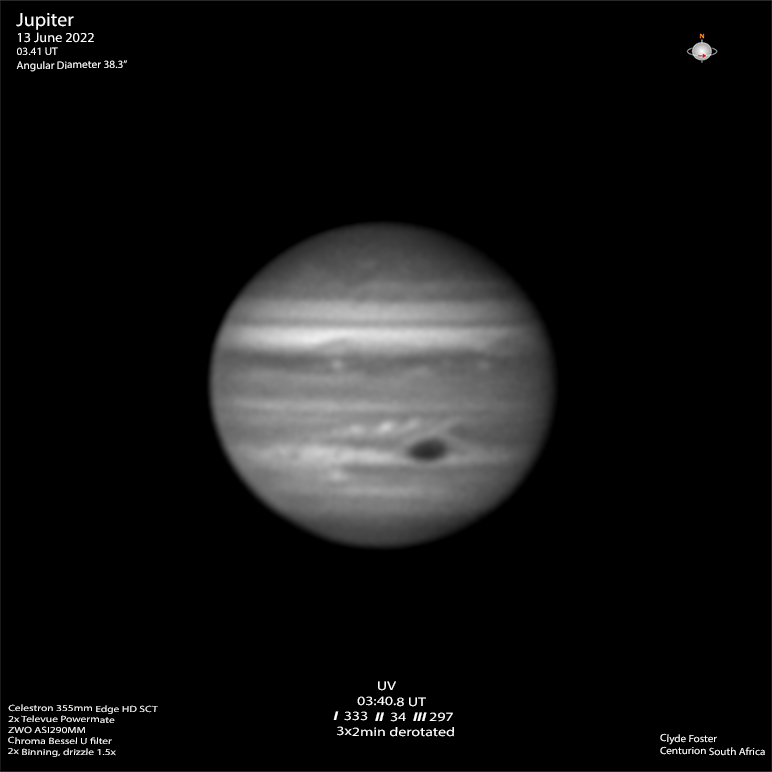
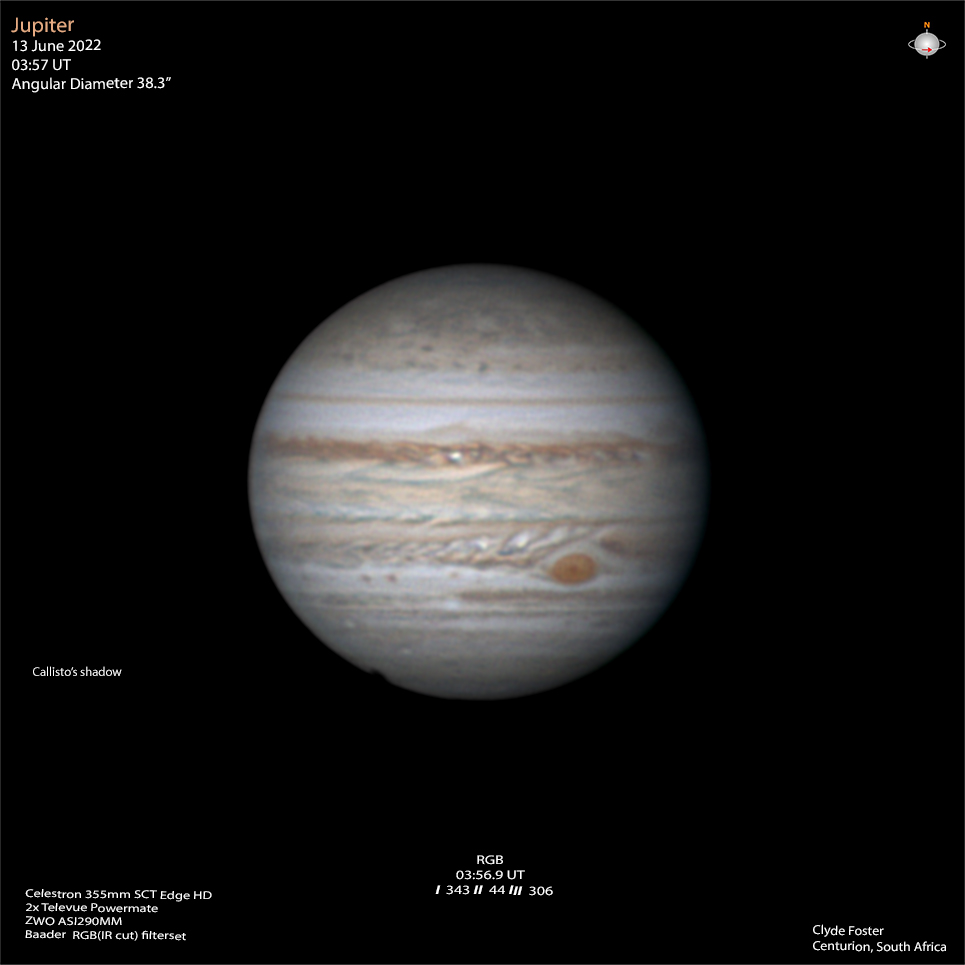 [Clyde Foster:Centurion,South Africa]
[Clyde Foster:Centurion,South Africa]
sto shadow is seen,as are the two interacting dark spots that Chris reported earlier.
 ≪アントニオ シダダオ ポルトガル≫
[Antonio Cidadao Oeiras - Portugal]
≪アントニオ シダダオ ポルトガル≫
[Antonio Cidadao Oeiras - Portugal]
Here's Jupiter from my other observing site under Alps,in unfair seeing conditions.
I used B filter to highlight NEB and GRS,which was in transit to CM in that moment.
 [Vincenzo della Vecchia : [Aversa,Italy]
[Vincenzo della Vecchia : [Aversa,Italy]
very poor seein allowing only some imaging in CH4 .
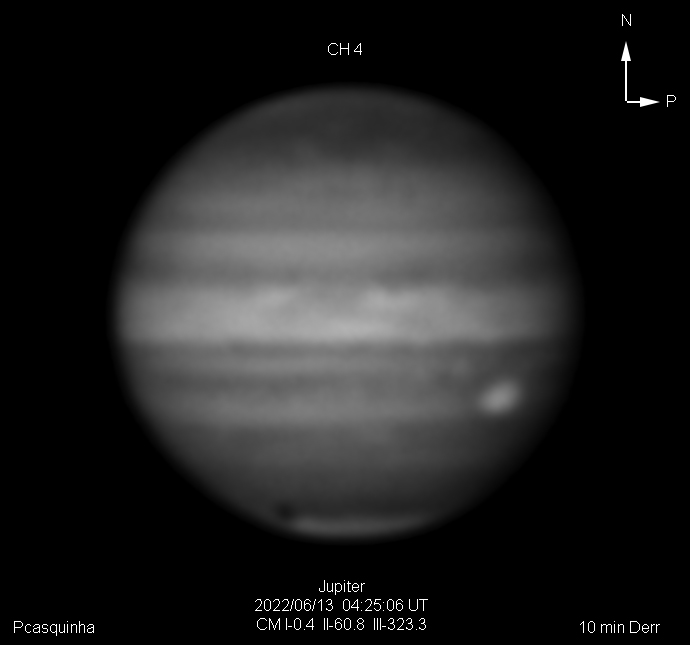 (site: 38.567 N /8.933 W Alt 124 m)
[Paulo Casquinha Palmela,Portugal]
(site: 38.567 N /8.933 W Alt 124 m)
[Paulo Casquinha Palmela,Portugal]
Like Anthony,the skies cleared for me this morning,for the first time since 26th May.
What's more the seeing was excellent for first Saturn and then Jupiter,
but fell away dramatically for Mars and Venus.
This is first light for my new Barlow which is the Siebert UV 1.5X.
This combined with the ASI 178MM which has small pixels (2.4 microns) and an excellent QE for UV,
means I can achieve a good image scale of ~ 0.07 arc secs per pixel at a much shorter focal length (~ 7m).
Previously,using my old ASI 174MM I needed a 3X barlow and a focal length of ~ 13m to get an adequate image scale (0.09 "/pxl).
The new set up gives a wider FOV and much brighter images,which was particularly beneficial for Saturn.
I also used the barlow with the ASI 462MC for Methane Band,as advocated by Andy Casely. Early days yet,
but the resolution I achieved was better than previously at Prime Focus.
The UV transmissivity of the barlow should,I hope,mean that I can go to the longer focal length for UV on Jupiter and Venus,
where I have previously imaged at Prime Focus,with a somewhat compromised image scale.
The jury is still out on that one.
The UV image for Jupiter was OK but I am not sure I had the focus right and it was difficult to achieve visually.
I will use a Bahtinov Mask the next time to get the right offset from the Red channel focus.
The seeing had deteriorated too much for Venus.
I also processed the RGB image for Callisto with pleasing results.
Callisto,against the black of space,doesn't seem to suffer the edge diffraction effects we see on the brighter moons.
The shadow transit is that of Europa.
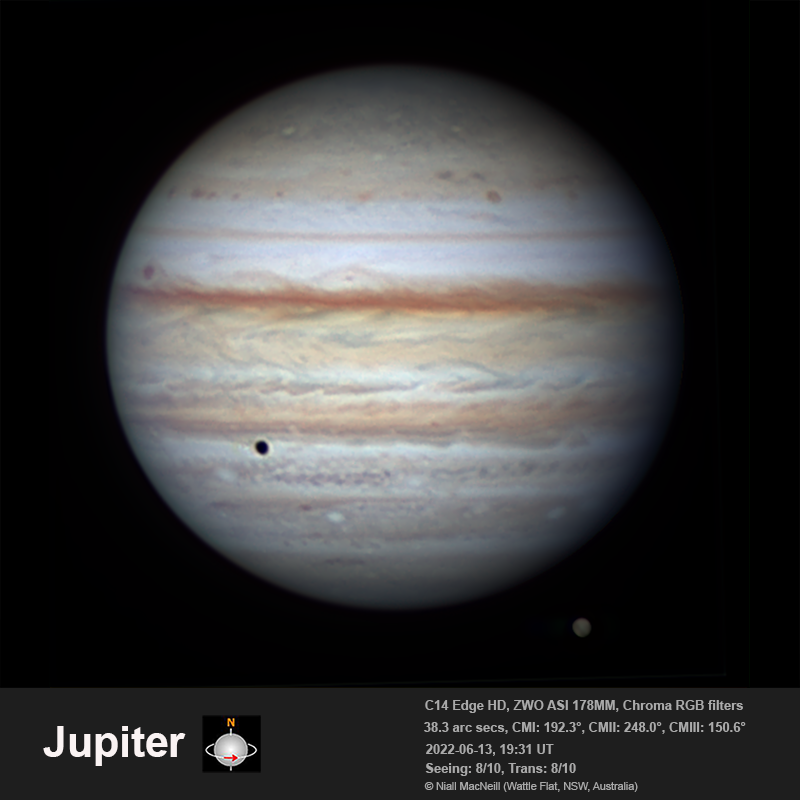
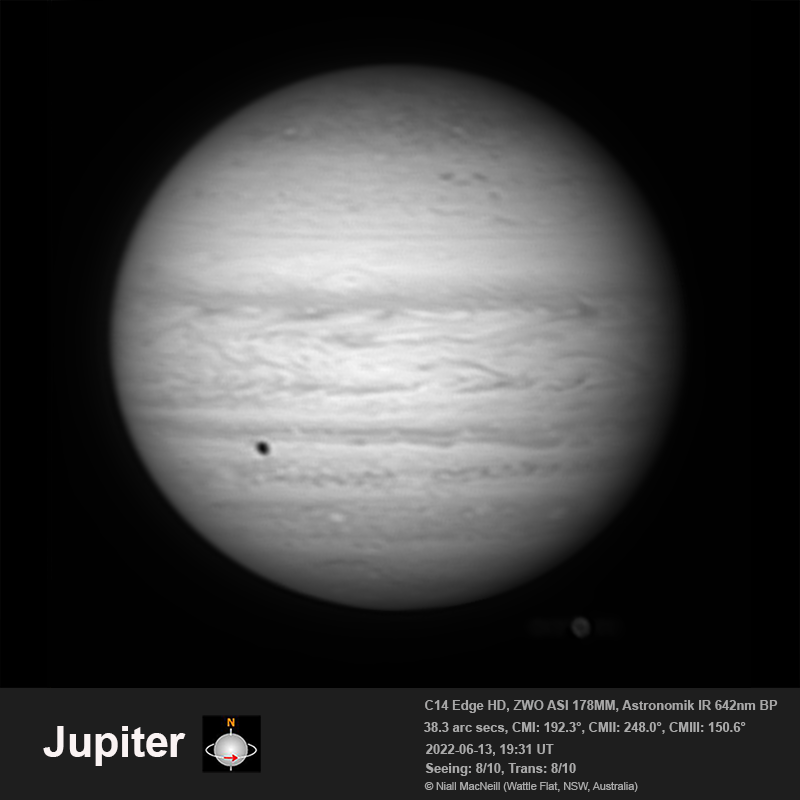
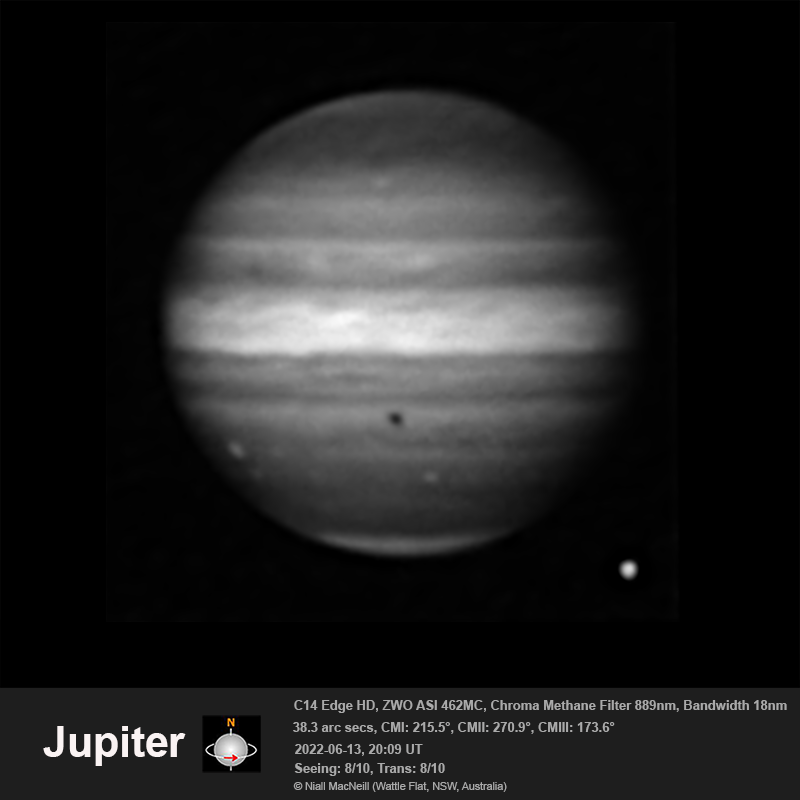
 [Niall MacNeill : Wattle Flat,NSW,Australia]
[Niall MacNeill : Wattle Flat,NSW,Australia]
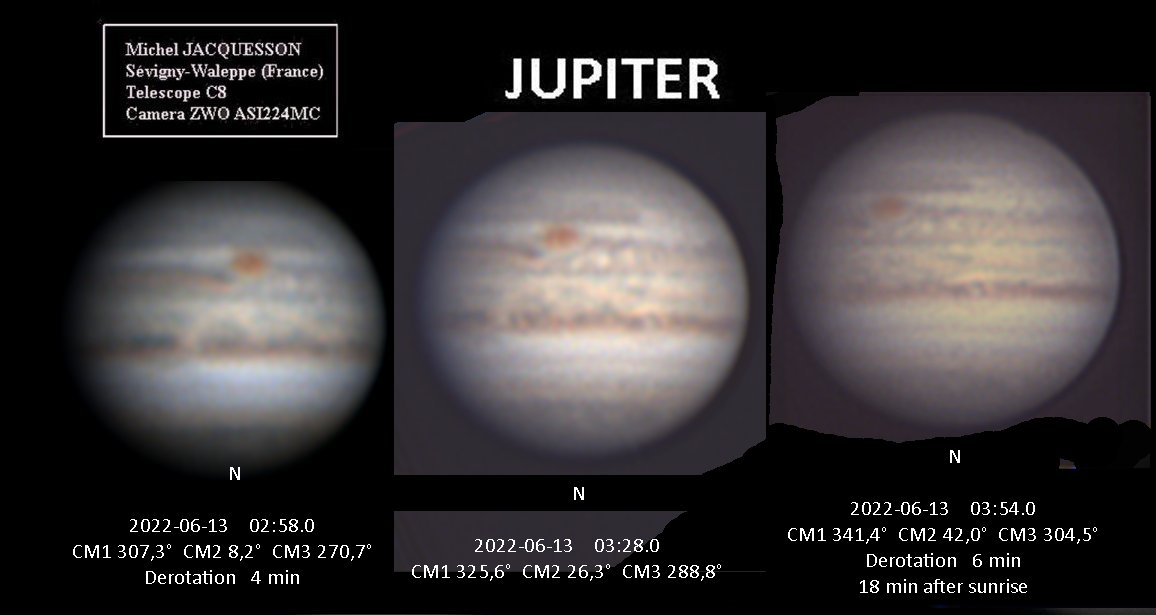 [Michel Jacquesson : Sevigny-Waleppe (Ardennes) France]
[Michel Jacquesson : Sevigny-Waleppe (Ardennes) France]







[Clyde Foster:Centurion,South Africa]
≪アントニオ シダダオ ポルトガル≫ [Antonio Cidadao Oeiras - Portugal]
[Vincenzo della Vecchia : [Aversa,Italy]
(site: 38.567 N /8.933 W Alt 124 m) [Paulo Casquinha Palmela,Portugal]



[Niall MacNeill : Wattle Flat,NSW,Australia]
[Michel Jacquesson : Sevigny-Waleppe (Ardennes) France]
 ALPO-Japan Latest
ALPO-Japan Latest

 Jupiter Section
Jupiter Section